Trees and Shrubs Monitoring Using an Ecological Approach: The Conclusion of the Restoration Project of Borgotrebbia Landfill (Northern Italy) by Cassinari C in Environmental Analysis & Ecology Studies_international journal of environmental sciences
Abstract
Plants growth monitoring in restored landfills are poorly available in literature. These data might be of critical importance for the evaluation and improvement of current and future restoration projects. Our study was focused on the plant’s growth monitoring during a Life project (LIFE10 ENV/IT/000400 NEW LIFE), designed to restore a closed landfill (located in Northern Italy) using reconstituted soils. The growth monitoring was conducted on mortality rate, stress symptoms and phenological cycle completion of 10 plant species (trees and shrubs). Data were acquired during the 12 months following the end of the restoration with an ecological approach, using Landolt’s indices and CSR functional strategy. It was observed that the stress-tolerant and the heliphilous ruderal species were the ones that best adapt to the restored environment (dead plants:0-39%; unhealthy plants: 24-42%), whereas the most competitive species were the ones with highest mortality (17-43%) and stress symptoms (43-51%).
Keywords:Restoration; Landfill; Plant monitoring; Ecological indices; Functional strategy
Introduction
Environmental restoration of degraded lands is one of the most urgent thematic to solve [1] due to world population growth and urban centres expansions, two phenomena causing land degradation and water and land ecosystem imbalances [2]. On a global level, soil consumption and land degradation [3] caused by urbanization proceed at a rate of 30ha day- 1 (ISPRA 2017). In order to fight degradation, during the last decades many environmental restorations took place in the world [4-10].
In urbanized areas, one of the most emblematic examples of degradation are the landfills, where solid wastes are compressed and isolated in order to avoid leachate losses; when the landfills are closed, they are covered with soil and planted, but none monitoring and maintaining are done, so often the closed landfills became a degraded land. Led by this chance, in the last years many closed landfill restoration projects took place [11-25] along with the development of more sustainable methods and technologies for municipal solid wastes management [26]: recycling process, new generation incinerators and bio-digester [27].
Altogether, these topics are increasingly attracting the attention of our society, with a growing number of initiatives for their support and promotion. The EU Biodiversity Strategy aims to ensure by 2020, ecosystems and their services are maintained and enhanced by establishing green infrastructure (strategically planned network of natural and semi-natural areas with other environmental features designed and managed to deliver a wide range of ecosystem services (EU Commission 2016) and restoring at least 15% of degraded ecosystems (EU Commission 2010). Despite all the efforts by different researchers (engineers, biologists, pedologists, chemists, architects) to improve the environmental restoration projects in highly degraded contexts, like landfills, there’s still a lot of work to do. Firstly, the restored areas are to be surveyed by acquiring data through a long-term monitoring; this is the only way to gain knowledge of possible errors occurred during the realization.
Despite the importance of this kind of survey, in many cases it’s not possible to do it, mainly because of founds. Due to this, the data concerning the main environmental components (soil, vegetation, water) of restored areas are low [28-39], especially those regarding restored landfills [17,15,21,22,40]. The main aim of this work was to present an ecological survey of trees and shrubs planted during a Life project (LIFE10 ENV/IT/000400 NEW LIFE; web site: http:// www.lifeplusecosistemi.eu), co-founded by European Union, aimed at restoring a closed landfill located in Piacenza (Emilia Romagna, Italy) using reconstituted soils [28]. The ecological survey, to understand the species’ responses in the new environment, was carried out using the Landolt’s ecological indices [41] functional strategy in accordance with the bioindication principles [42]. This research wants to prove how such simple and cheap methods may grant useful information about the restoration and the plants’ adaptation to restored areas.
Study area
The closed landfill is located in Borgotrebbia, municipal territory of Piacenza (Emilia-Romagna, Italy) near Trebbia River (coordinates: 45°04’13’’ N, 9°39’33’’ E; altitude: 60m) (Figure 1). The area, 20ha wide, is in Trebbia Fluvial Park and, partially, inside a Site of Community Importance (SCI 4010016 Basso Trebbia). The solid urban wastes’ landfill was active between 1972 and 1985. Wastes were buried in a 4-5m layer and then covered with a 20- 30cm cap of degraded soils. In 2012, with the New Life project, the spontaneous vegetation and the soil of the closed landfill were studied [28,43-46] (Figure 2). Several ruderal species of Sellarietea mediae and Artemisietea vulgaris phytosociological classes, typical of degraded environments, were observed. The cap soil had poor water holding capacity, low organic carbon content, it was compacted and with stoniness, its values of clay, total CaCO3, CEC, P2O5, K2O, pH and salinity were used to calculate, in 5 sampling points, LCC [47] & FCC [48] (Figure 1 & Table 1). In this way, the study area soils were described having sever limitation for agricultural use, limiting their use to grazing or wildlife and with low fertility [28,46].
This was in accordance with the lack of more exigent species, like trees and shrubs. The restoration of the closed landfill was made by means of soil restoration by reconstitution. Reconstituted soils were produced by a technology (mcm Ecosistemi Patent), designed to act on two types of soils: on Technosol and degraded soils. By the means of this pedotechnique chemical and mechanical actions were applied to a mixture of degraded soil and environmental and pedological suitable materials such as waste of productive activities (sludge from paper industry and cellulose transformation processes, washing sludge of inert materials and water treatment sediments for drinking water supplies): the mixture was crushed, so the added organic fraction was incorporated into the mineral particles of the soil, then a mechanical compression realized the new reconstituted soil aggregates [46-48].
From October 2014 to August 2017, 10ha of the study area were covered with reconstituted soils 1m deep. Physicochemical properties of the reconstituted soil were performed and so LCC and FCC were calculated in the same previous sample points (Figure 1 & Table 1). The new soils were described having moderate limitations that restrict the choice of plants or that require moderate conservation practices and characterized by a high fertility [46-70], thus confirming other studies on reconstituted soils [28, 45,46,49,50]. From October 2016 to December 2017, over 3,000 trees and shrubs of 16 autochthonous species (Table 2), were planted in the area (Figure 3). All these plants were no more than 2 years old. The 16 species had to improve the ecological conditions and the landscape of the area, they had to produce edible fruits for birds, being the area a resting spot for migratory birds. In order to promote the plants to take roots, cuts of the herbaceous vegetation and a watering program during the drought season were made and still continue.
Figure 1:Geographical localization of the study area.
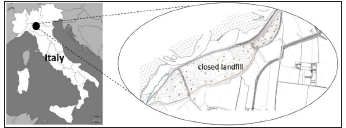
Figure 2:Closed landfill before environmental restoration.
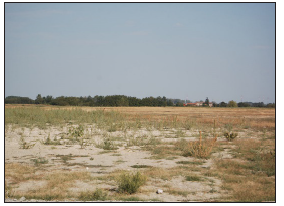
Figure 3:Tree planting intervention and monitoring area definition.
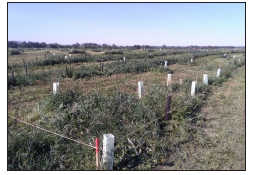
Table 1:Physical-chemical parameters of landfill soil before (2011) and after (2016) environmental restoration in the 5 sample points (data from Manfredi et al., 2019).
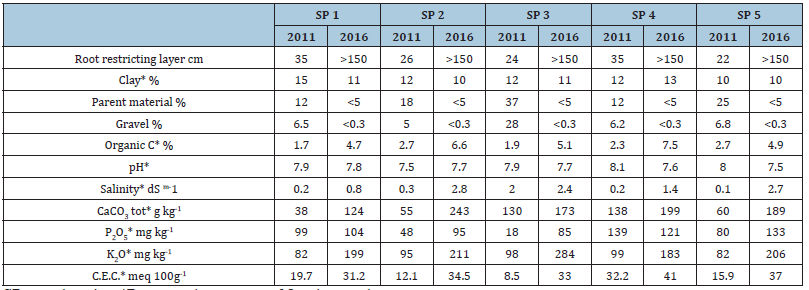
SP sample point; *Data are the average of 3 sub-samples
Table 2:Floristic list of trees and shrubs planted.
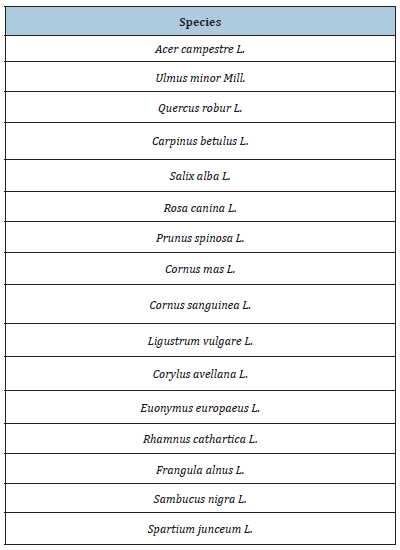
Material and Methods
Trees and shrubs’ monitoring were conducted on a monthly basis across 2017 considering 8-400m2 (20x20m)-plots (A, B, C, D, E, F, G and H) homogeneously distributed on the area. In every plot all the species were identified using Pignatti [68] and numbered. For every species, a radar chart with Landolt’s ecological indices (2010) (T, temperature; L, light intensity; F, soil moisture; R, substrate reaction; N, nutrients; H, humus; D, aeration) and a triangular plot with CSR strategy of each species were made to compare the plants ecological needs with the related functional strategy. The functional strategy of each plant was retrieved from recent literature [51].
Monthly the following data were collected in every plot:
A. Number of dead plants (without considering dead plants within 14 days after planting);
B. Number of plants showing stress-related symptoms (leaf yellowing and/or plant pathologies);
C. Number of flowered plants;
D. Number of plants producing fruits.
The % mortality rate was evaluated for every species as follows:
Where M was mortality rate, d was the number of dead plants during 2017 and p was the size of the population in which the dead plants occurred. The % of unhealthy, flowered and fruit-producing plants were calculated in the same way. Data were then organized in a matrix and statistically analyzed with Principal Component Analysis (PCA). PCA was performed using the “vegan” package [52] of R 3.5.1 software (R Development Core Team 2018). Species with less than 8 individuals were excluded from calculations because not significant.
M = d/p * 100
Where M was mortality rate, d was the number of dead plants during 2017 and p was the size of the population in which the dead plants occurred. The % of unhealthy, flowered and fruit-producing plants were calculated in the same way. Data were then organized in a matrix and statistically analyzed with Principal Component Analysis (PCA). PCA was performed using the “vegan” package [52] of R 3.5.1 software (R Development Core Team 2018). Species with less than 8 individuals were excluded from calculations because not significant.
Result
215 plants from 16 different species were planted inside the 8 plots (Table 3). 6 species (Ulmus Minor, Quercus robur, Carpinus betulus, Salix alba, Corylus avellana, Spartium junceum) were represented by less than 8 individuals and so were excluded from the statistical analysis and results.The requirement of the species, based on the ecological indices of [41] were evaluated from the radar charts analysis (Figure 4). The species had similar requirements of temperature (T), light intensity (L) and soil water content (F) being moderately heliophilous, typical of mild weather and tolerating a moderate soil water content. Euonymus europaeus, Rhamnus cathartica, Frangula alnus and Sambucus nigra had a peculiar tolerance for poorly aerated soils (D) (compact soils), Sambucus nigra required a lot of soil nutrients (N) whereas Rhamnus cathartica and Frangula alnus tolerated poorly fertile soils. Frangula alnus was the only species that required elevated amounts of humus (H).
Table 3:Number of monitored plants in the 8 plots. A, B, C, D, E, F, G & H: Plots *Species with less than 8 individuals
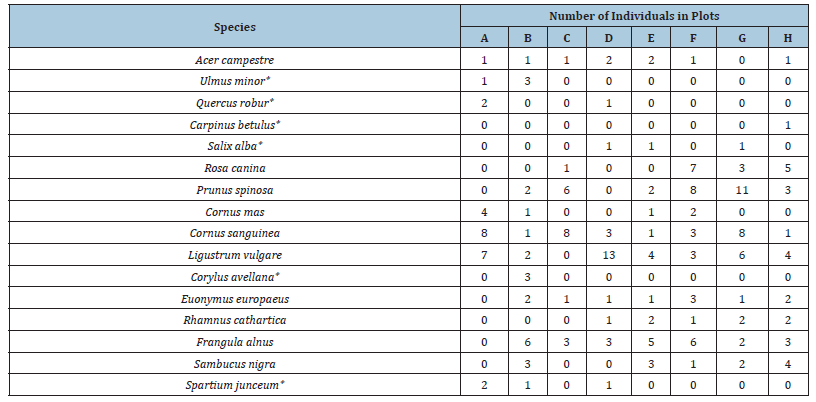
Figure 4:Radar charts of ecological indices of Landolt et al. (2010) for every monitored species. Key: T-Temperature; L-Light intensity; F-Soil moisture; R-Substrate reaction; N-Nutrients; H-Humus; D-Aeration.
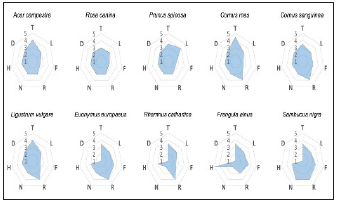
From CSR triangular graph (Figure 5) it was possible to observe the functional strategies of the species. The CSR strategies were: Cornus mas, Euonymus europaeus and Rhamnus cathartica S/CSR, Rosa canina SR/CSR, Cornus sanguinea CS/CSR and Acer campestre CSR. Frangula alnus (S/SR) and Ligustrum vulgare (S/CS) were the most stress-tolerant species, whereas Sambucus nigra was the most competitive (C/CSR) and Prunus spinosa was the most ruderal (SR/ CSR) [51].<./
All the 10 species showed stress-related symptoms (Figure 6) while mortality didn’t occur in 3 of the 10 species (Acer campestre, Rosa canina, and Ligustrum vulgare) during 2017. Only Cornus sanguinea, Ligustrum vulgare, Frangula alnus were able to produce flowers but only Ligustrum vulgare e Frangula alnus completed their biological cycle by producing mature fruits (Figure 7), this could be due to the unlike time required by the species to reach sexual maturity. From PCA biplot (Figure 8) emerged that the species showing higher mortality and stress rates were the most competitive that required soil nutrients, available water content and a neutral-to-basic pH. The ruderal heliophilous species, requiring well aerated soils, were the ones showing less suffering from the new environment.
Figure 5:CSR strategies of the ten species considered.

Figure 6:Percentage of dead and unhealthy plants.

Figure 7:Percentage of flowered plants and fruitproducing plants.
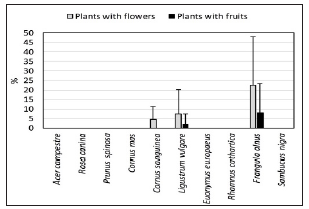
Figure 8:PCA ordination biplot of species (1. Acer campestre; 2. Rosa canina; 3. Prunus spinosa; 4. Cornus mas; 5. Cornus sanguinea; 6. Ligustrum vulgare; 7. Euonymus europaeus; 8. Rhamnus cathartica; 9. Frangula alnus; 10. Sambucus nigra). Key: T-Temperature; L-Light Intensity; F-Soil Moisture; R-Substrate Reaction; N-Nutrients; H-Humus; D-Aeration; C-Competitor Strategy; S-Stress-Tolerant Strategy; R-Ruderal Strategy; Mortality, Percentage Of Dead Plants; Unhealthy, Percentage of Unhealthy Plants; Flowers, Percentage Of Flowered Plants; Fruits, Percentage Of Plants With Fruits..

Discussion
This study is an example of a simple and effective ecological approach to post-restoration vegetation survey. These data are useful not only to biologists and botanists, but also to all the people involved in planning and evaluation restoration projects. The combined use of traditional (ecological indices) and innovative (CSR functional strategy) methods is successful. Landolt’s indices application allowed to understand that the most fitting species for the reconstituted soil were the ones best tolerating elevated luminous radiation levels (heliophilous) requiring well-aerated and humus-rich soils, like Acer campestre, Rosa canina, Prunus spinosa, Ligustrum vulgare, Rhamnus cathartica and Frangula alnus. Ecological indices confirmed that, being the reconstituted soils well-aerated, non-compacted, rich in organic matter and high fertile.
CSR strategy represents a univocal system applicable to every tracheophyte [51] and as reported for the first time in this study, applicable also to restored areas survey. It can be observed that the most competitive species had more adaptation problems (mortality rate and stress-related symptoms) whereas ruderal and stress-tolerant plants best adapted to the restored environment. This result was confident with the fact that competitive species could live in an environment without stresses (defined as external constraints which limit the rate of dry matter production [53] or disturbances (factors causing plant biomass destruction [53]. Indeed, transferring highly competitive plants from a protected artificial environment, like a nursery, to a non-protected one, like a restored landfill, may have represented the main stress able to affect their survival, health and ability to complete the phenological cycle. So, to improve the overall restoration efficiency, it can be said that stress-tolerant and ruderal species, based on their CSR strategy, had to be chosen rather than competitive ones. Even though nowadays CSR strategy of over 3,000 species is known [51,54-56] there’s still a lot of work to do to define the functional strategy for as many as possible species included herbaceous species, given their importance in anthropic-perturbed ecosystems. Indeed, in synphytosociology (or dynamic phytosociology) [57], is known that the initial stages in a forest formation process are herbaceous species [58,59] and that the same are in environmental restored areas [60,31,55,56]. Further surveys should be carried out on the study area on the whole vegetation system (including herbaceous species). These kinds of surveys, being the key to understand the highly complex dynamics in the restored areas, should be made till the current potential vegetation [61-70] will be reached. Unfortunately, it’s not so, because these monitoring are costly, and they need technicians with specific skills.
Conclusion
This study highlighted how monitoring trees and shrubs growth, using both classic (ecological indices) and modern (CSR functional strategy) methods, may give useful information to improve the interventions efficiency in a restored landfill. Based on the results, it would recommend those involved in environmental restoration projects to select the plants accordingly to their specific CSR functional strategy. In order to obtain better environmental results, autochthonous ruderal and stress-tolerant plants should be used. Moreover, it would like to urge to monitor the post-intervention for at least 20 years [31]. Even though the long-term surveys are time consuming and expensive, are also fundamental to understand the highly complex dynamics underlying the restored areas. Lastly, the use of new technologies and materials, like reconstituted soils, are hoped to be applied to closed landfills restoration, in a world-wide optic, to fight environmental degradation.
Acknowledgement
This research was supported by Life+ project “Recupero ambientale di un suolo degradato e desertificato mediante una nuova tecnologia di trattamento di ricostituzione del terreno” (Life 10 ENV/IT/000400 New Life, http://www.lifeplusecosistemi.eu).
References
- Aronson J, Alexander S (2013) Ecosystem restoration is now a global priority: Time to roll up our sleeves. Restor Ecol 21(3): 293-296.
- Pimentel D, Burgess M (2018) World Human Population Problems. In: Dellasala DA, Goldstain MI (Eds), Encyclopedia of the Anthropocene. Elsevier, USA, pp. 313-317.
- Stocking MA (2001) Land degradation. In: (2nd edn) International Encyclopedia of the Social & Behavioral Science, Elsevier, USA pp. 8242-8247.
- Kiehl K, Kirmer A, Donath TW, Rasran L, Holzel N, et al. (2010) Species introduction in restoration projects evaluation of different techniques for the establishment of semi-natural grasslands in central and Northwestern Europe. Basic and Applied Ecology 11(4): 285-299.
- Hagen DT, Hansen I, Graae BJ, Rydgren K (2014) To seed or not to seed in alpine restoration: Introduce grass species outcompete rather than facilitate native species. Ecol Eng 64: 255-261.
- Morandi B, Piégay H, Lamouroux N, Vaudor L (2014) How is success or failure in river restoration projects evaluated? Feedback from French restoration projects. Journal of Environmental Management 137: 178-188.
- Prach K, Jongepierová I, Řehounková K, Fajmon K (2014) Restoration of grasslands on ex-arable land using regional and commercial seed mixtures and spontaneous succession: Successional trajec- tories and changes in species richness. Agric Ecosyst Environ 182: 131-136.
- Rezende GM, Vieira DLM (2019) Forest restoration in southern Amazonia: Soil preparation triggers natural regeneration. Forest Ecology and Management 433: 93-104.
- Zhang J, Mengting L, Hui J, Xiyun C, Chong F, et al. (2018) Critical thresholds in ecological restoration to achieve optimal ecosystem services: An analysis based on forest ecosystem restoration projects in China. Land Use Policy 76: 675-678.
- Zhang Y, Xu X, Li Z, Liu M, Xu C, et al. (2019) Effects of vegetation restoration on soil quality in degraded karst landscapes of southwest China. Science of the Total Environment 650: 2657-2665.
- Simmons E (1992) Landfill site restoration for wildlife. Waste Planning 3: 3-7.
- Simmons E (1999) Restoration of landfill sites for ecological diversity. Waste Management & Research 17(6): 511-519.
- Ewing K (2002) Mounding as a technique for restoration of prairie on a capped landfill in the puget sound lowlands. Restoration Ecology 10(2): 289-296.
- Parsons WFJ, Ehrenfeld JG, Handel SN (2002) Vertical growth and mycorrhizal infection of woody plant roots as potential limits to the restoration of woodlands on landfills. Restoration Ecology 6(3): 280-289.
- Athy ER, Keiffer CH, Stevens MH (2006) Effects of mulch on seedlings and soil on a closed landfill. Restoration Ecology 14(2): 233-241.
- De Mei M, Di Mauro M (2006) Study of some characteristic Mediterranean vegetation species best suited for renaturalization of terminal phase municipal solid waste (MSW) landfills in Puglia (southern Italy). Acta Oecologica 30(1): 78-87.
- Rebele F and Lehman C (2002) Restoration of a landfill site in Berlin, Germany, by spontaneous and directed succession. Restoration Ecology 10(2): 340-347.
- Nichols OG, Grant CD (2007) Vertebrate fauna recolonization of restored bauxite mines-key findings from almost 30 years of monitoring and research. Restoration Ecology 15(4): 116-126.
- Biederman LA and Whisenant SW (2009) Organic amendments direct grass population dynamics in a landfill prairie restoration. Ecological Engineering 35(5): 678-686.
- Rahman ML, Tarrant S, McCollin D, Ollerton J (2012) Influence of habitat quality, landscape structure and food resources on breeding skylark (Alauda arvensis) territory distribution on restored landfill sites. Landscape and Urban Planning 105(3): 281-287.
- Camerini G, Groppali R (2014) Landfill restoration and biodiversity: A case of study in Northern Italy. Waste Management and Research 32(8): 782-790.
- Rahman ML, Tarrant S, McCollin D and Ollerton J (2011) The conservation value of restored landfill sites in the East Midlands, UK for supporting bird communities. Biodiversity and Conservation 20(9): 1879-1893.
- Witmer GW (2013) Evaluating habitat manipulations and rodenticides to protect seedlings from rodent damage at restored landfills in New York. Restoration Ecology 22(2): 178-184.
- Chen XW, Wong JTF, Leung AOW, Ng CWW, Wong MH, et al. (2017) Comparison of plant and bacterial communities between a subtropical landfill topsoil 15 years after restoration and a natural area. Waste Management 63: 49-57.
- Chen XW, Wong JTF, Chen ZT, Leung AOW, Ng CWW, et al. (2018) Arbuscular mycorrhizal fungal community in the topsoil of a subtropical landfill restored after 18 years. Journal of Environmental Management 225: 17-24.
- Dung J, Chi Y, Zou D, Fu C, Huang Q, et al. (2014) Comparison of municipal solid waste treatment technologies from a life cycle perspective in China. Waste Management and Research 32(1): 13-23.
- Matheri AN, Mbohwa C, Ntuli F, Belaid M, Seodigeng T, et al. (2018) Waste to energy bio-digester selection and design model for the organic fraction of municipal solid waste. Renewable and Sustainable Energy Reviews 82: 1113-1121.
- Cassinari C, Manfredi P, Giupponi L, Trevisan M, Piccini C, et al. (2015) Relationship between hydraulic properties and plant coverage of the closed-landfill soils in Piacenza (Po Valley, Italy). Solid Earth 6: 929-943.
- Giupponi L, Bischetti GB, Giorgi A (2015) Ecological index of maturity to evaluate the vegetation disturbance of areas affected by restoration work: A practical example of its application in an area of the Southern Alps. Restor Ecol 23(5): 635-644.
- Giupponi L, Bischetti GB, Giorgi A (2017) A proposal for assessing the success of soil bioengineering work by analyzing vegetation: Results of two case studies in the Italian Alps. Landscape Ecol Eng 13(2): 305-318.
- Giupponi L, Bischetti GB, Giorgi A (2017) Vegetation analysis and estimation of forest reconstitution time in protected areas of Val Camonica (Southern Alps) where a commercial mixture of seeds was sown. Eco mont 9(1): 22-29.
- Giupponi L, Borgonovo G, Giorgi A, Bischetti GB (2019) How to renew soil bioengineering for slope stabilization: Some proposals. Landscape and Ecological Engineering 15(1): 37-50.
- Mao X, Wei X, Jin X, Tao Y, Zhang Z, et al. (2019) Monitoring urban wetlands restoration in Qinghai Plateau: Integrated performance from ecological characters, ecological processes to ecosystem services. Ecological Indicators 101: 623-631.
- Theiling CH, Janvrin JA, Hendrickson J (2014) Upper mississippi river restoration: Implementation, monitoring, and learning since 1986. Restoration Ecology 23(2): 157-166.
- Avis PG, Gaswick WC, Tonkovich GS, Leacock P (2016) Monitoring fungi in ecological restorations of coastal Indiana, USA. Restoration Ecology 25(1): 92-100.
- Lapin K, Bernhardt KG, Mayer E, Roithmayr S, Neureiter J (2016) Monitoring river restoration efforts: Do invasive alien plants endanger the success? A case study of the traisen river. Journal of Environmental Protection 7(6): 831-843.
- Martin DM, Lyons JE (2018) Monitoring the social benefits of ecological restoration. Restoration Ecology 26(6): 1045-1050.
- Padrò JC, Carabassa V, Balagué J, Brotons L, Alcaniz JM, et al. (2019) Monitoring opencast mine restorations using Unmanned Aerial System (UAS) imagery. Science of Total Environment 657: 1602-1614.
- Reis BP, Martins SV, Filho EIF, Sarcinelli ST, Gleriani JM, et al. (2019) Forest restoration monitoring through digital processing of high-resolution images. Ecological Engineering 127: 178-186.
- Carrington LP, Diaz A (2011) An investigation into the effect of soil and vegetation on the successful creation of a hay meadow on a clay‐capped landfill. Restoration Ecology 19(1): 93-100.
- Landolt E, Bäumler B, Erhardt A, Hegg O, Klötzli F, et al. (2010) Flora indicativa: Ecological indicator values and bio- logical attributes of the Flora of Switzerland and the Alps. Haupt Verlag, Bern. Botanical Journal of the Linnean Society 167(4): 478-479.
- Pignatti S, Bianco PM, Fanelli G, Paglia S, Pietrosanti S, et al. (2001) Plants as environmental indicators, technical-scientific manual. National Environmental Protection Agency, Rome, Italy.
- Giupponi L, Corti C, Manfredi P (2013) Onopordum acanthium acanthium in una ex-discarica della Pianura Padana (Piacenza). Informatore Botanico Italiano 45: 213-219.
- Giupponi L, Corti C, Manfredi P, Cassinari C (2013) Application of the floristic-vegetational indexes system for the evaluation of the environmental quality of a semi-natural area of the po valley (Piacenza, Italy). Plant Sociology 50(2): 47-56.
- Giupponi L, Corti C, Manfredi P (2015) The vegetation of the borgotrebbia landfill (Piacenza, Italy): Phytosociological and ecological characteristics. Plant Biosystems 149(5): 865-874.
- Manfredi P, Cassinari C, Trevisan M (2019) The reconstitution: Environmental restoration assessment by means of LCC and FCC. EQA 33: 11-25.
- Klingebiel AA, Montgomery PH (1961) Land Capability Classification. Washington, USA.
- Sanchez PA, Palma CA, Buol SW (2003) Fertility capability soil classification: A tool to help assess soil quality in the tropics. Geoderma 114: 157-185.
- Tassi D (2014) Reconstituted lands and natural earths comparison between the two soils depending on the possibility of reducing nitrogen fertilization in a corn cultivation. Vittorio Tadini Experimental Company, Italy.
- Manfredi P, Cassinari C, Trevisan M (2015) Soil temperature fluctuations in a degraded and in a reconstituted soil. Italian Journal of Agrometeorology (3): 63-72.
- Pierce S, Negreiros D, Cerabolini BEL, Jens Kattge, Sandra Díaz, et al. (2017) A global method for calculating plant CSR ecological strategies applied across biomes world-wide. Functional Ecology 31(2): 444-457.
- Dixon P (2003) Vegan, a package of R functions for community ecology. J Veg Sci 14(6): 927-930.
- Grime JP (2001) Plant strategies, vegetation processes and ecosystem properties. Chichester, England.
- Cerabolini BEL, Brusa G, Ceriani RM, De Andreis R, Luzzaro A (2010) Can CSR classification be generally applied outside Britain? Plant Ecology 210(2): 253-261.
- Giupponi L, Giorgi A (2019) A contribution to the knowledge of Linaria tonzigii Lona, a steno-endemic species of the orobie bergamasche regional park (Italian Alps). Eco Mont 11(1): 16-24.
- Giupponi L, Giorgi A (2019) Effectiveness of modern leaf analysis tools for the morpho- ecological study of plants: The case of Primula albenensis Banfi et Ferl. Nordic Journal of Botany 37(8):
- Rivas Martínez S (2005) Notions on dynamic-catenal phytosociology as a basis of landscape science. Plant Biosystems 139(2): 135-144.
- Pignatti S (1995) Ecologia vegetale. UTET, Italy.
- Blasi C (2010) The vegetation of Italy. Palombi and Partner, Roma, Italy.
- Walker LR, Del Moral R (2008) Lessons from primary succession for restoration of severely damaged habitats. Applied Vegetation Science 12(1): 56-67.
- Biondi E (2011) Phytosociology today: Methodological and conceptual evolution. Plant Biosystems 145: 19-29.
- EU Commission (2010) EUROPE 2020 A strategy for smart, sustainable and inclusive growth. Europe.
- EU Commission (2016) Supporting of the implementation of Green Infrastructure. Rotterdam, Netherlands.
- Grime JP (1974) Vegetation classification by reference to strategies. Nature 250: 26-31.
- Grime JP (1977) Evidence for the existence of three primary strategies in plants and its relevance to ecological and evolutionary theory. The American Naturalist 111: 1169-1194.
- ISPRA (2017) Land consumption, territorial dynamics and ecosystem services. ISPRA - Higher Institute for Environmental Protection and Research Via Vitaliano Brancati, Italy.
- Manfredi P (2016) The reconstituited soils: The technology and its possible implementation in the remediation of contaminated soils. EQA 21: 19-32.
- Pignatti S (2017) Flora d’Italia. Edagricole, Bologna, Italy.
- R Development Core Team (2018) R: A language and environment for statistical computing. Vienna, Austria.
- Tarrant S, Ollerton J, Rahman ML, Joanna Tarrant, Duncan McCollin, et al. (2012) Grassland restoration on landfill sites in the East Midlands United Kingdom: An evaluation of floral resources and pollinating insects. Restoration Ecology 21(5): 560-568.




No comments:
Post a Comment